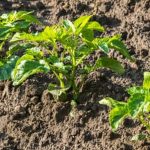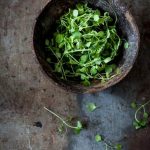
Growing vegetables in your garden can save you money. During harvest time, your own produce becomes part of your meals. Home gardeners feel deep satisfaction in preparing salad or seasoning the casserole with freshly picked plants from their own vegetable gardens. Their feeling of the taste is incomparable. Fresh surplus are distributed to friends and love ones while some are keep frozen.
It doesn’t require much space to grow vegetables. Even a container pot or a window box will do the trick. Where space is limited, you can grow a mini-garden indoor or outdoor. If you have a good sun, access to water and enough containers, growing a garden’s worth of fruits and vegetables in a limited space is a no-brainer.
You can even harvest more than one crop if your choice of plants and planting schemes are all well planned and executed. Windowsills, balconies and doorstep areas can be used, as well as empty packs of milks, pails, plastic buckets and cans.
When planting in containers, proper spacing is very important. One sturdy plant is better than several weak ones. Crowding chokes root systems will slow growth and poor production. With container vegetable garden, you no longer need to worry about poor soil types and bad drainage, or heavy-duty tiller to break up hard clay and rocks.
There is no weeding to worry about and you can change the looks of your container placements by simply moving them around anytime to a place you wanted to.
Vegetable gardening offers a change from the monotony of the supermarket. You can grow variety of vegetables that you want. When choosing plants for your vegetable container garden, consider container worthy crops such as beans, carrots, cucumbers, peppers, tomatoes, eggplants and radish. Other root crops such onions and turnips can also do well in containers, but remember to always take care of these crops by ample fertilizers and water.
Also consider grapes and berries. Though some take a while to get established, they bear fruits more each year. Planting for fall crops can be started in early summer, though summer planting can still be done in June in most regions.
One great advantage of growing vegetables and spices in containers involves the advent of the upside-down gardening. Crops with the likes of tomatoes, basil, parsley, rosemary and peppers do well with this approach. The ideas is that the vines will cascade downward instead of growing up a stake.
A grow box can be treated by punching perforations through the bottom of a container. The other option is to purchase a device specially designed for this purpose. Upside gardens do not require a great deal of space and is perfect for balconies and patios.
Equally important, seeds and soil must properly be taken cared of in your vegetable container garden. Seeds do not always have to be bought. Reasonably fresh dill, anise, fennel, coriander and other seeds already on the spice rack should grow. If not, they are too old to add much to food anyway and should be replaced. Scoop out seeds from vegetables you’ve bought, dry them a week or so before planting.
Soil preparation on the other hand is very crucial for good results. Have the soil tested. Every state has a land-grant college that will test soil for a small fee. It will give abundant basic gardening advice, and garden resources tips. Start growing those veggies in your garden and turn your home made meals into something truly special. Take care of your plants to make them productive by keeping them watered and harvested.

If you’re looking to get into vegetable gardening, or are just looking for some tips on how to make your current garden better, then you’ve come to the right place! My name is Ethel and I have been gardening for years. In this blog, I’m going to share with you some of my best tips on how to create a successful vegetable garden.




